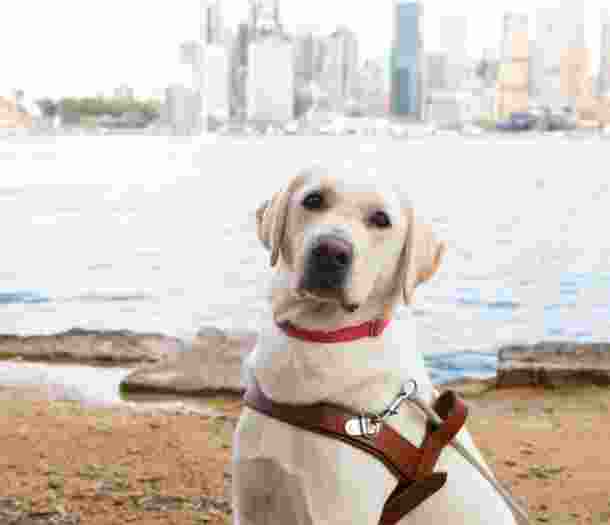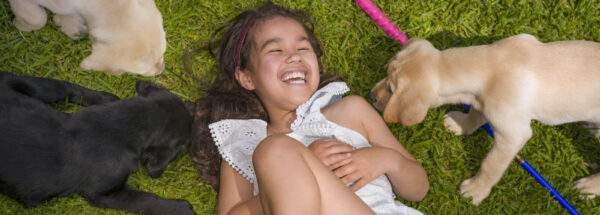On this page:
Obedience Training
Guide Dogs NSW/ACT suggests participating in a puppy preschool.
This is a good opportunity for your puppy to learn basic commands, to socialise, and be introduced to different scenarios, smells, people, and other dogs. Ask your local vet about a puppy preschool in your area.
When training your puppy, remember to be consistent with your commands, rewards, and with your own behaviour. When you are calm, your puppy will be gentle too. When you are consistent and firm with your commands and rules, your puppy will not get confused and will soon learn good habits.
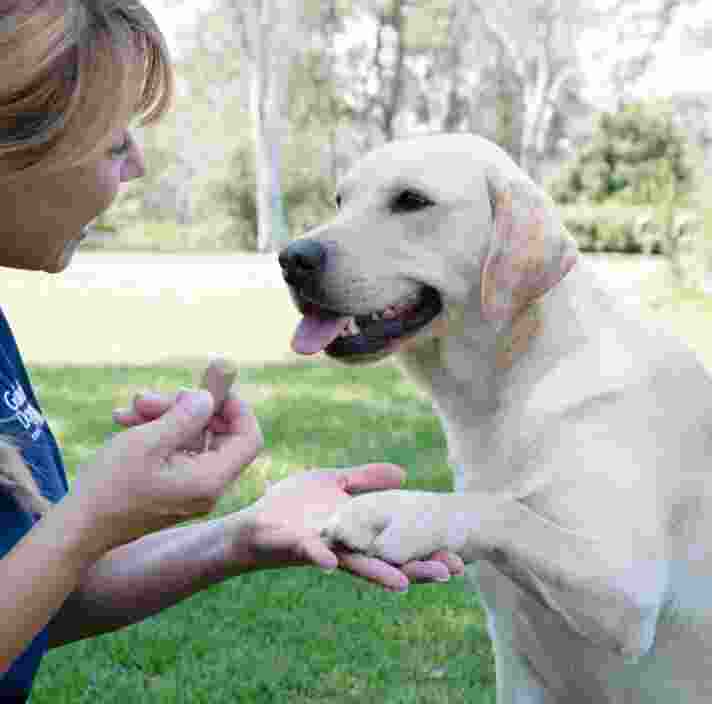
Routine
Dogs are creatures of habit.
Having a routine for your puppy to get used to will help them understand what to expect each day and, therefore, settle more readily. Where possible, keep feeding, exercise and sleep times to a predictable pattern and place.
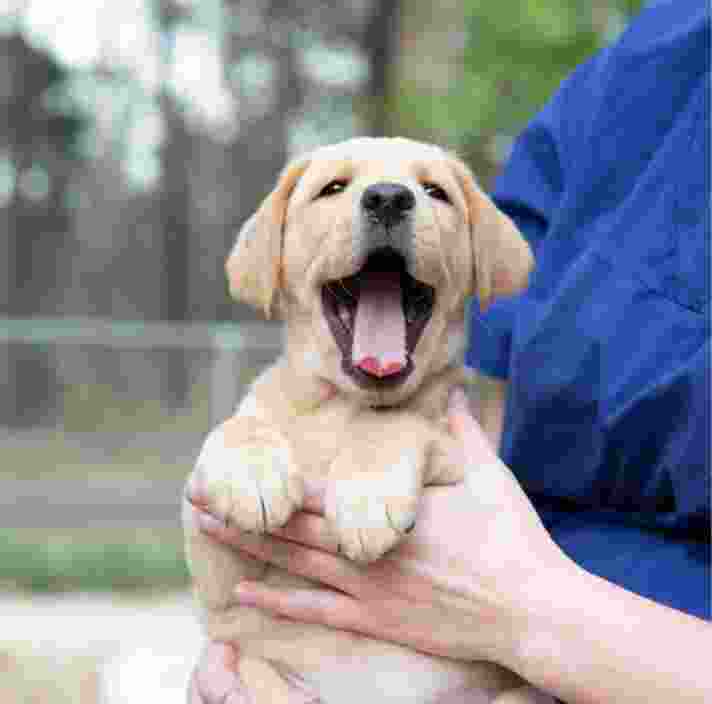
House Rules
Within the first few days, you must establish with your puppy if there are areas you do not wish for them to go.
Create physical barriers by closing the doors or installing baby gates. In time, your puppy will understand and respect the boundaries created. It’s important to set house rules and consistently reinforce them.
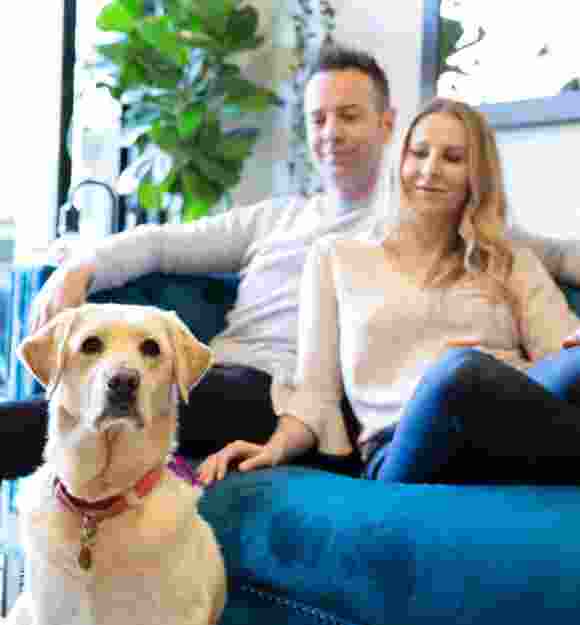
Some house rules you can apply include:
- No jumping on the furniture or beds.
- Your puppy is not allowed in the kitchen when someone is cooking.
- Chewing on household items is to be discouraged.
- Your puppy must not get overly excited when others are eating.
- Meeting and greeting guests and family members must be done appropriately. No jumping or vocalisation.
- Never feed your puppy from the table or kitchen. If you do this once, your puppy will remember.
- Encourage calm behaviour in the home.
- No scavenging: your pup should not clean up under the food table.
- Minimise your puppy’s opportunity to ‘explore’ bench tops and tables.
- Teach your puppy that household appliances—such as vacuum cleaners and brooms—are not toys.
Leaving your puppy alone
Alone time builds your puppy’s confidence.
To decrease the chance of separation anxiety, regularly leave your puppy alone for a short period during the day. In the first few weeks, it is a great idea to leave the puppy alone in his or her sleeping area. This is a familiar environment and the puppy is likely already used to being left alone in this space at night time.
When leaving the puppy alone outside, make sure that:
- the puppy is comfortable exploring outside without you
- the puppy has the right amount of water, bedding, toys and shelter
- the yard is suitably safe for the size of your pup.
Toileting routines
Give your puppy the opportunity to toilet regularly.
Set a routine for toileting. The best times for your puppy to toilet are:
- first thing in the morning
- after meals
- after a nap
- if inside for longer than one hour
- last thing before bed.
Managing negative behaviour
Keeping puppies on the best behaviour.
Try your hardest to ignore naughty behaviour such as barking or whimpering. For example, if the puppy learns that it can bark for your attention, this negative behaviour will become a habit.
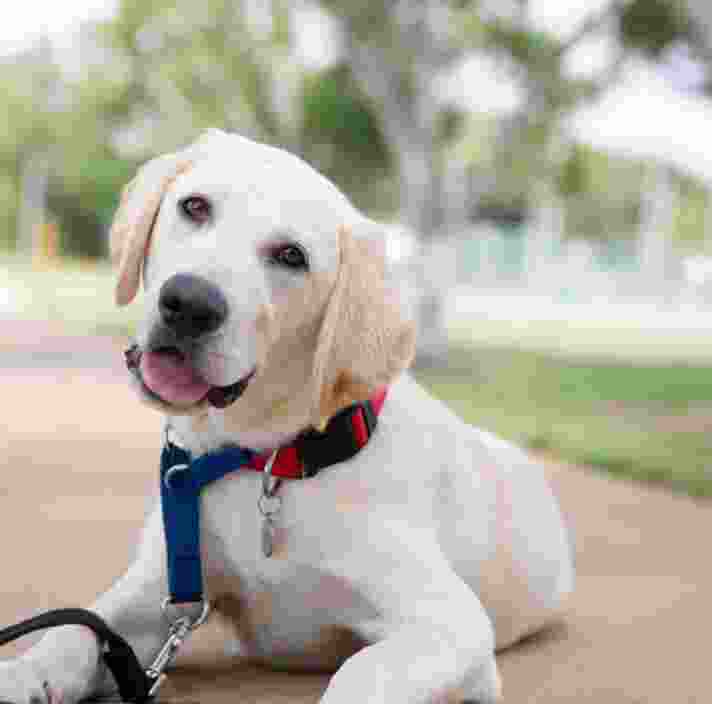
Tips for socialisation
Getting social with others.
- You must supervise the puppy at all times with other pets and children.
- Introducing puppies to other household pets can be a tense moment for all involved. Make sure you do this in a controlled environment; for example, with your puppy on a lead or able to see other pets through a window or a fence.
- Cats must be able to see the puppy from a safe distance without being able to interact. If you carry your cat to your young pup, the cat may get scared and scratch or bite the puppy or even you.
- When out in public, ensure you have a ‘poo bag’ for your pup. It is important to pick up the puppy’s faeces and dispose of them properly. Litter and dog fouling is an offence and attracts penalties.
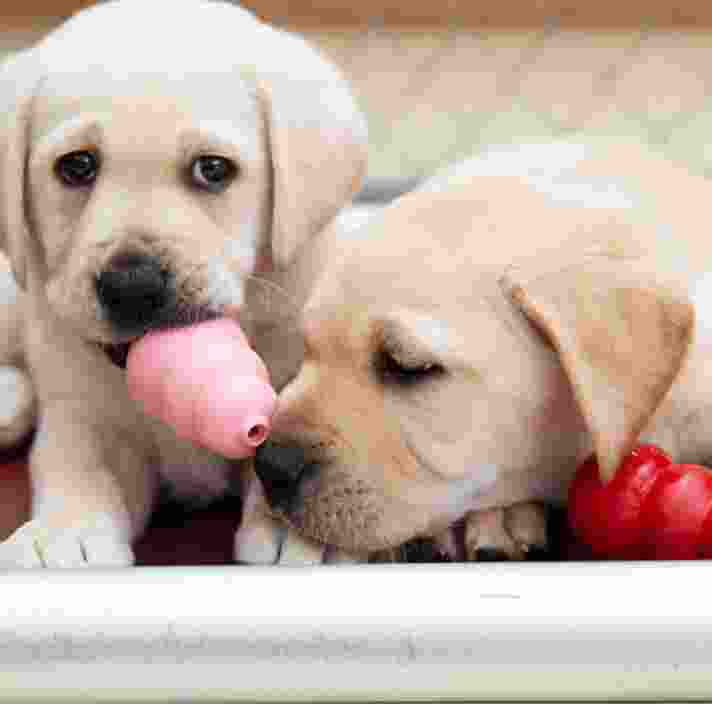
Commands
Here are some general commands you can teach your puppy:
- Sit: Pup sits on command
- Down / Drop: Pup lays down on command
- Stay: Pup holds position until handler returns
- Come: Pup returns to handler when called
- Steady: Pup slows down on command
- Wait: Pup holds position until release command has been given
- Hup Hup: Encourages pup to speed up
- Up / Stand: Pup stands and does not move
- Heel: Pup stands on the left side of the handler
- Leave it: Used to redirect the puppy from distractions
- Give: Pup releases item from mouth
- Let’s go: Pup starts walking
- Quick Quick: Command to toilet
- OK / Free: Release command
- On your mat/bed: Pup goes to designated area
- Sit-Wait-OK: Commands for feeding
The above information is from our Puppy Raising Manual, the training guide we use to raise and train our very own Guide Dog puppies.
Ready to continue?
Seems like you have filled this form earlier. Let’s pick up where you left off.
